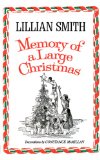The Library will be closed for winter recess from 5:00pm on Friday, December 21, 2012 until 9:00am on Wednesday, January 2, 2013.
Our hours during intersession are:
Wednesday-Friday, January 2-4, 2013: 9:00am-10:00pm
Saturday & Sunday, January 5-6, 2013: 9:00am-5:00pm
Monday-Tuesday, January 7-8, 2013: 9:00am-10:00pm
Happy Holidays to All! Enjoy the Break!!






